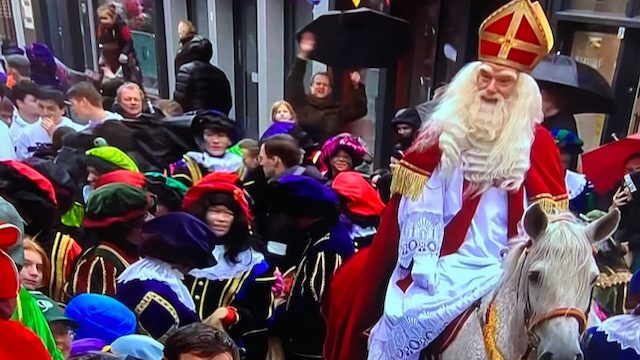Who is Sint Nicolaas?
Sint Nicolaas was born as Nicolaas around the year 300 in the port city of Myra, which was once part of Greece.
Even as a baby, Nicolaas was said to be quite extraordinary. Legend has it that, as an infant, he stood in his bath, and thanked God for his birth.
He later became a priest. and many remarkable stories about him have been passed down through the ages. One story claims that he miraculously resurrected three boys who had been dismembered and placed in a barrel by an innkeeper, all through a prayer to God. Due to this tale, Nicolaas became the protector of children.
In another story, Nicolaas assisted three impoverished girls who couldn’t afford to marry. He did so by secretly tossing money into their room at night, with one of the bags landing in a shoe. This is why children still put their shoes out, hoping Sint Nicolaas will leave something inside.
In yet another story, Sint Nicolaas embarked on a ship journey to Jerusalem. On the way, the devil attempted to sink the ship in a storm. Nicolaas prayed to God, and immediately, the wind calmed, and the sea became peaceful. This is how he also became the patron saint of sailors. In many port cities, churches were constructed in his honor, such as the Sint Nicolaas Church in Amsterdam.
Becoming The bishop of Myra
Later in life, Nicolaas became the bishop of Myra. He passed away on December 6th in the year 342 in Myra. He was buried in his own church and interred in a stone coffin. The church declared him a saint, and “Sint” was added to his name.
Seven hundred years later, Turkish Muslims conquered Myra, making it impossible for Christians to visit the tomb of their saint.
Italian sailors then sailed to Myra to retrieve Sint Nicolaas’ body and transported it to Bari in Southern Italy. There, his remains were placed in a new tomb within a church specifically built for him, the Sint Nicolaas Church.
Here’s where Spain, the horse, and Pieten came into the picture
In short, what was once a story about helping needy children has evolved into the tale of an elderly man, who accompanied by a group of Pieten, travels from Spain to The Netherlands on his steamboat. He then rides his white horse across rooftops at night, while the Pieten drop gifts through the chimney.
The whole transformation was the work of schoolteacher Jan Schenkman. In 1850 he wrote the book “Sint Nikolaas en zijn knecht” ( Saint Nicholas and his servant) which introduced most of the elements we are familiar with today, including the steamboat from Spain and the white horse. Piet made his appearance much later, in 1868, in a picture book.

